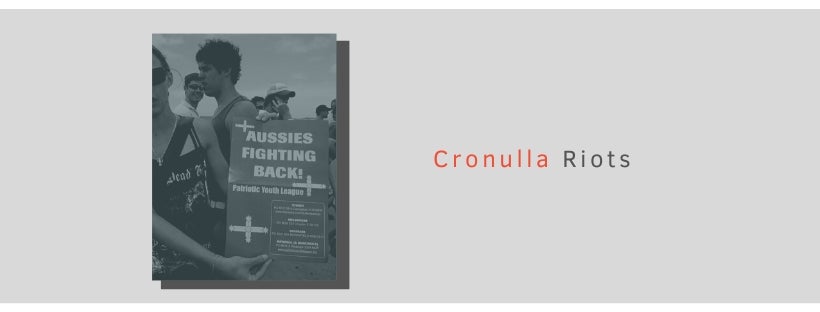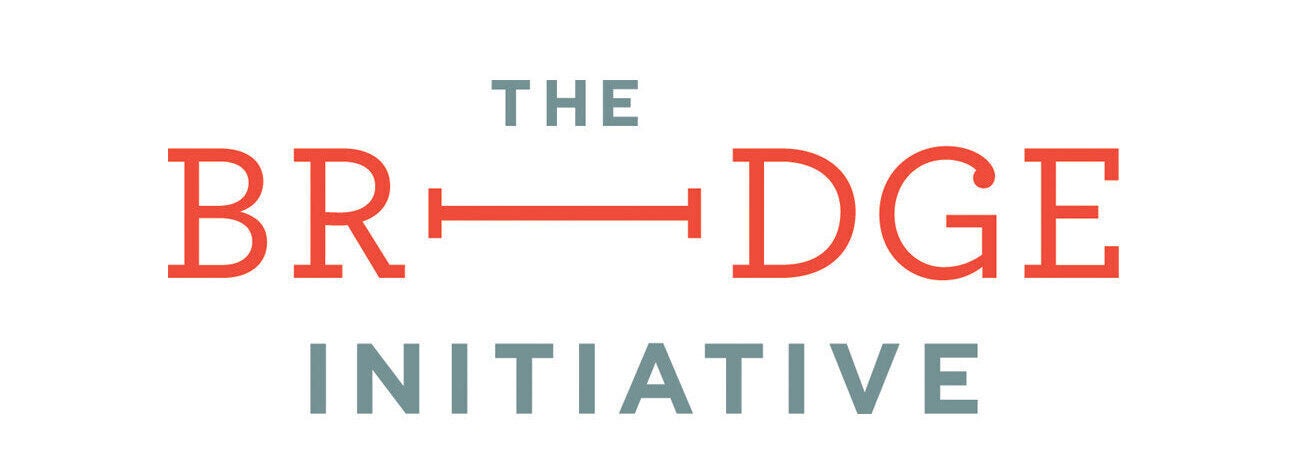
Factsheet: Cronulla Riots
IMPACT: The Cronulla riots in December 2005 marked one of the most significant race riots in Australian history. Anglo-Australian youth targeted individuals of Middle Eastern background while displaying and voicing racist, anti-immigrant, and anti-Muslim rhetoric.
The Cronulla riots occurred in 2005 in the predominantly Anglo-Australian surf community of Cronulla beach after a protest was organized via SMS messages “calling on ‘Aussies’ to ‘support Leb and wog* bashing day,’ ‘bring your mates and let’s show them this is our beach and they are never welcome.’”
In the months before the December riots, a number of racially motivated altercations took place on the beach. In October 2005, local police reported a brawl between local youths and young men of Middle Eastern origin. Following this event, Sergeant Grant Lister wrote, “Many local beach users have the opinion that Cronulla beaches are for locals only and show an obvious racial prejudice against Middle Eastern males.” These incidents occurred all within the backdrop of post-September 11 moral panics regarding a rising Middle Eastern, and Muslim “threat.”
An incident on December 4, 2005, between three off-duty lifeguards and eight men of Middle Eastern heritage served as the catalyst for the riots. A verbal altercation occurred and punches were thrown, resulting in the lifeguards sustaining injuries. In response, locals organized a protest publicized through SMS messages that circulated across Sydney. According to the New South Wales police, “more than 270,000 text messages were circulated to incite a ‘racially motivated confrontation.’” One text message read, “Just a reminder that Cronulla’s 1st wog bashing day is still on this Sunday. Chinks bashing day is on the 27th and the Jews are booked in for early January.”
A 2015 article by Dr. Nahid Afrose Kabir stated that following the circulation of text messages, on December 11, 2005, “5000 Australians, mostly young men from Sutherland Shire, wrapped themselves in Australian flags and asserted that Cronulla Beach belonged to them through abusive language against Lebanese Australians.” A 2015 article in the Guardian described the event as “one of Australia’s more shameful displays of racism, one that made headlines around the world. Cronulla became a clarion call for racists around the country to unite.”
A 2017 scholarly article noted that “many young members of the crowd were draped in Australian flags and displayed racist chants and slogans such as ‘we grew here, you flew here,’ ‘ethnic cleansing unit.’” The group projected their anger onto a handful of youth of ‘Middle Eastern’ or ‘Muslim’ appearance, who were then violently assaulted by the mob. A 2015 article by Craig Greenhill, a photographer who was present during the riots, said the area “seemed calm until some people with a bit of colour walked on the beach front and that was when the crowd turned and chased them down. It was violent — bottles being thrown. The police had to rush in and protect the three innocent people on the beach and they were being chased.”
The Domestic Editor of SBS, David King, was on the ground reporting on the riots and noted, “The thing I found most confronting was a big group of people chasing a young woman in a hijab and they were trying to rip her hijab off. It was just horrific. She ran into a kiosk and the police helped her out. But there was a group outside chanting ‘Kill the Leb’ and climbing on to the kiosk – it was really frightening stuff.”
Racist chants that initially targeted Lebanese Australians during the riot quickly took a shift towards the religion of Islam. On the day of the riot, a male youth was spotted with a tank top with the slogan: ‘Mohammed was a camel raping f*ggot,’ while another young man was photographed wearing the slogan ‘Love Nulla, [Cronulla] f*ck Allah’ on his t-shirt.
Mob violence spilled out onto Cronulla beach, streets, and the local train station, with police and some local residents attempting to save victims from the assault of the mob. Greenhill photographed the incident at the train station, stating that a mob attacked “two lone Middle Eastern guys” who were trying to leave the area and were waiting for a train. At the end December 11th, it was reported that “26 people had been treated for injuries and 16 people had been arrested.”
After the initial violence, efforts began from small numbers of young men of Middle Eastern heritage to retaliate, resulting in arrests on both sides. Police reported that the last incident related to the riots occurred on December 13th.
On December 13, 2005, then-Prime Minister John Howard denied that the riots were racially linked, declaring, “I do not accept that there is underlying racism in this country…I do not believe Australians are racist.” Instead he described the events as a “law and order issue.” In contrast, the Sydney Morning Herald reported that the then-NSW premier, Morris Iemma, condemned the weekend riots as “un-Australian,” and described the riots as the “ugly face of racism in this country.”
The role of tabloid media in producing the racist discourses that fueled and exacerbated the riots has since been comprehensively examined by academics. During the week of the riots, radio broadcaster Steve Price told his 2UE listeners that he was a proponent of “a rally, a street march, call it what you will. A community show of force.” In April 2005, conservative broadcaster Alan Jones made on-air comments describing Lebanese Muslims as “vermin” and “mongrels.” In 2009 a court found that Alan Jones “incited hatred, serious contempt and severe ridicule of Lebanese Muslims.”
At the time of the riots, Roland Jabbour, the chairman of the Australian Arabic Council, said the unrest had been stoked by politicians and media commentators. After the riots, Jabbour stated, “Arab Australians have had to cope with vilification, racism, abuse and fear of a racial backlash for a number of years, but these riots will take that fear to a new level.”
Strike Force Neil, a review of the police response, provided a number of explanations for the riot, including the role of racism while emphasizing links between alcohol consumption and the media manipulation of impressionable youth as key factors.
In a 2015 journal article, Natascha Klocker of the University of Wollongong argued that Cronulla is now stigmatized as a racist place, affecting the willingness for Australians from ethnically diverse backgrounds to visit its beaches. The stigma has particularly impacted the way Australian Muslims engage in the region. A 2019 article in The Conversation included interviews with young Muslims ten years after the riots, and found that they “still felt excluded” and “continue to avoid” the beach area.
* Wog “is a slang term in Australian English and was originally a racist slur or insult toward Australians of Mediterranean 1 ancestry. It came into popular use in the 1950s when immigration from this part of the world was high. More recently, the term has been used to refer to people from the Middle East.”
—
This factsheet is published in collaboration between the Bridge Initiative and researchers at the Challenging Racism Project at Western Sydney University. More information about this project can be found here.
Updated November 14, 2019

 Search
Search